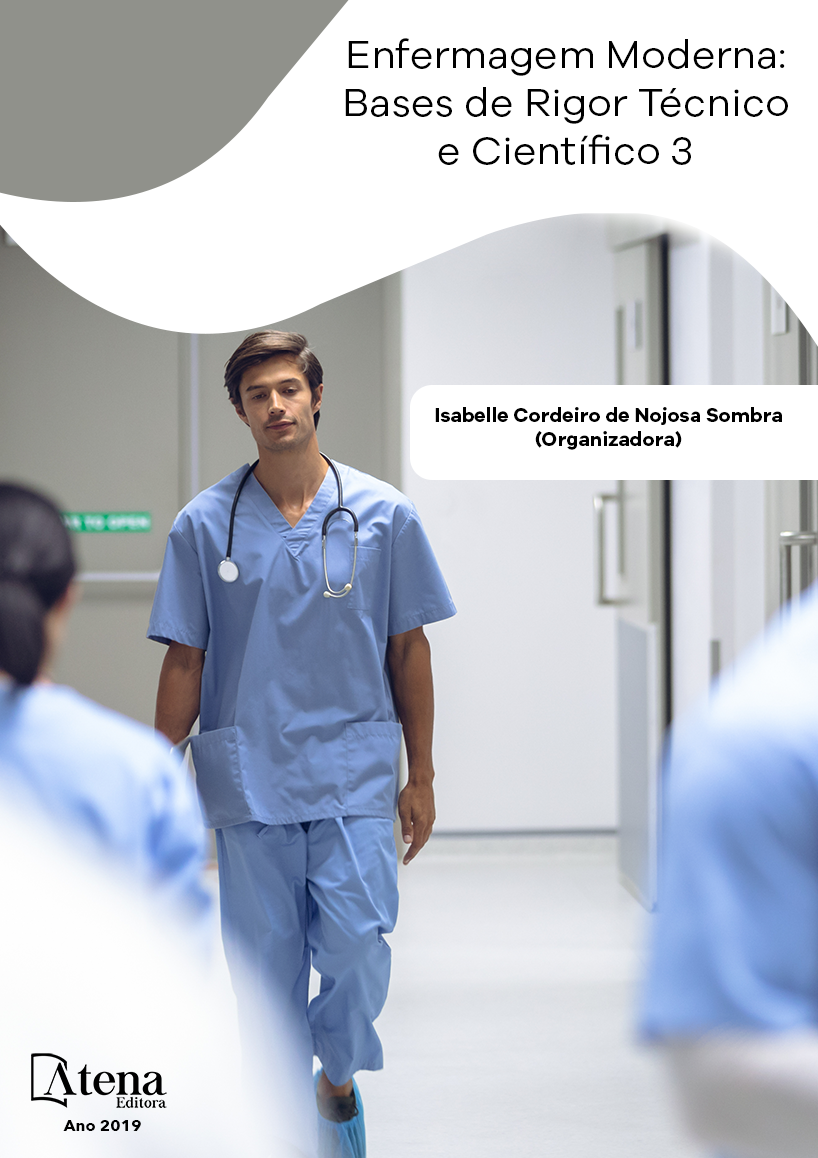
PROCESSO DE ENFERMAGEM NA ASSISTÊNCIA AO PACIENTE COM PÊNFIGO FOLIÁCEO: ESTUDO DE CASO
O pênfigo é um conjunto de
patologias de etiologia autoimune, provocando
acantólise no epitélio estratificado escamoso
da derme e epiderme. Caracteriza-se por
bolhas, que quando rompidas, possuem odor
fétido, provocando dor intensa devido a sua
localização pela presença das terminações
nervosas livres. Destaca-se o processo de
enfermagem no cuidado a este paciente.
Objetivou-se identificar os DEs e as Intervenções
de Enfermagem no cuidado a uma paciente
acometida por pênfigo foliáceo em uma Unidade
de Terapia Intensiva (UTI). Trata-se de um estudo
de caso. O referencial foi a North American
Nursing Diagnosis Association (NANDA-I 2015-
2017) e Nursing Interventions Classification (NIC-
2016). Foram obedecidos os pressupostos da
Resolução 466/2012. Relato do caso: Paciente
72 anos, procurou atendimento por lesões
bolhosas difusas, algumas rompidas, recobertas
com escamas finas e crostas. Oriunda da
internação clínica, sendo tratada com Cefepime
2G. Apresentou encefalopatia, foi transferida
para a UTI após rebaixamento de sensório. Foi
realizado: entubação orotraqual, passagem
de cateter venoso central, sonda nasoenteral
e cateterismo vesical de demora. Houve troca
de antibiótico e iniciado corticóides. Os DEs
considerados prioritários para a paciente
foram: Integridade da pele prejudicada; Dor
aguda; Síndrome do idoso frágil e Nutrição
desequilibrada menor do que as necessidades
corporais. As intervenções de enfermagem
foram: 1) Cuidados com lesões; 2) Controle da
ventilação mecânica invasiva; 3) Controle da
Dor. Houve melhora significativa nas lesões,
com reepitelização, redução do exsudato e odor.
Destacou-se a necessidade de capacitação da
equipe ao que se refere aos cuidados com esta
patologia.
PROCESSO DE ENFERMAGEM NA ASSISTÊNCIA AO PACIENTE COM PÊNFIGO FOLIÁCEO: ESTUDO DE CASO
-
DOI: 10.22533/at.ed.11319221127
-
Palavras-chave: Sistematização de Enfermagem; Pênfigo; Diagnósticos de enfermagem; Intervenções de Enfermagem.
-
Keywords: Nursing systematization; Pemphigus; Nursing diagnoses; Nursing interventions.
-
Abstract:
The pemphigus is a set of
pathologies of autoimmune etiology, causing
acantholysis in the squamous stratified
epithelium of the dermis and epidermis. It is characterized by blisters, which when
broken, there is a foul odor, causing intense pain due to its location by the presence
of free nerve endings. The nursing process in the care of this patient is highlighted.
The objective was to identify the EDs and Nursing Interventions in the care of a patient
affected by pemphigus foliaceus in an Intensive Care Unit (ICU). This is a case study.
The North American Nursing Diagnosis Association (NANDA-I 2015-2017) and Nursing
Interventions Classification (NIC-2016). The assumptions of Resolution 466/2012 were
followed. Case report: A 72-year-old patient sought care for diffuse bullous lesions,
some of them ruptured, covered with thin scales and scabs. Coming from clinical
hospitalization, being treated with Cefepime 2G. The patient had encephalopathy and
she was transferred to the ICU after sensory reduction. She underwent orotracheal
intubation, central venous catheter passage, nasogastric tube and delayed bladder
catheterization. There was an antibiotic exchange and corticosteroids were initiated.
The EDs considered a priority for the patient were: impaired skin integrity; acute pain;
frail elderly syndrome; and unbalanced nutrition less than body needs. The nursing
interventions were: 1) Injury care; 2) Invasive mechanical ventilation control; 3) Pain
control. There was significant improvement in lesions, with repetition, reduction of
exudate and odor. The need for training of the team regarding the care of this pathology
was highlighted.
-
Número de páginas: 15
- Michele Antunes
- Roselene Hartz


